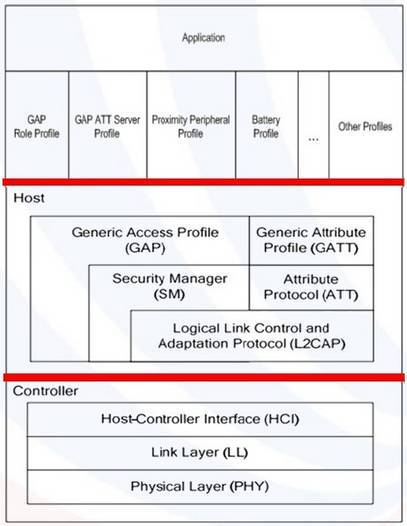The structure of BLE is as follows
- PHY layer: 1Mbps adaptive frequency hopping GFSK (Gaussian frequency shift keying), operating in the license-exempt 2.4GHz frequency band.
- Connection layer LL: The control chip works in one of the five states of standby (preparation), advertising (broadcasting), scanning (listening and scanning), initiating (initiating connection), and connected (connected). The device that initiates the connection becomes the master (master), and the device that accepts the connection request becomes the slave (slave).
- Host control layer HCI: Provide software application programming interface (API) for the host upward, and external hardware control interface, which can realize device control through serial port, SPI, and USB.
- Logical link control and adaptation protocol L2CAP layer: provides data encapsulation services for the upper layer, allowing logical end-to-end data communication.
- Security management layer SM: Provide pairing and key distribution services to realize secure connection and data exchange.
- Generic Access Profile GAP layer: An interface that communicates directly with applications or profiles, and handles device discovery and connection-related services. Also handles initialization of security features.
- Attribute protocol layer ATT: export specific data (called attributes) to other devices, allowing the device to display a specific piece of data to another device, called “attributes”, the device displaying attributes is called server, pre-control pair The device is called client.
- General attribute configuration file GATT: defines the structure of the service framework and configuration files (profiles) using ATT. All data communication in BLE needs to go through GATT.



